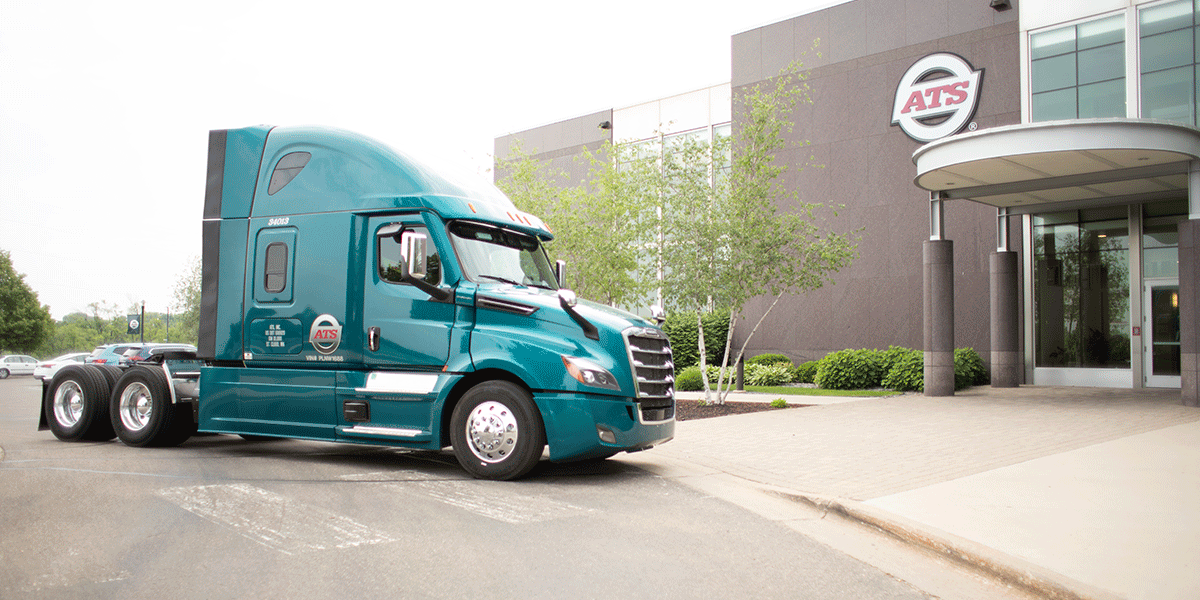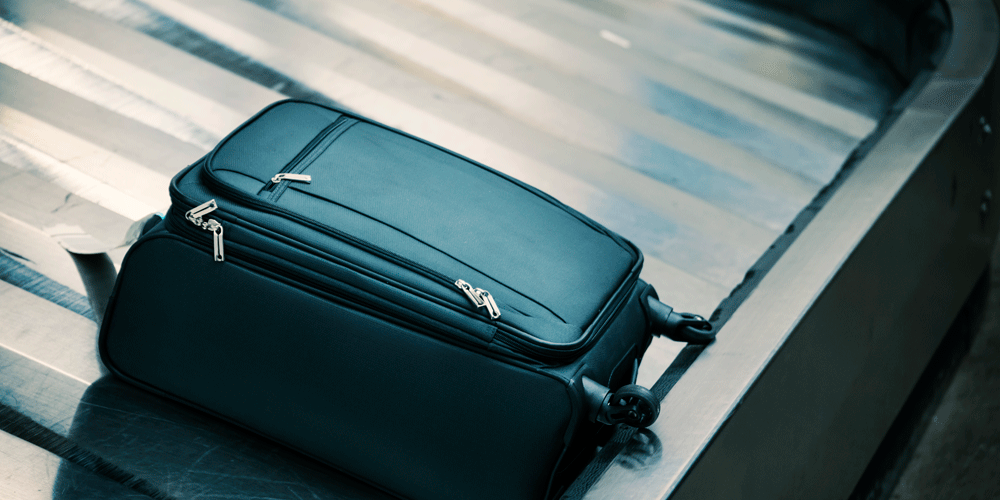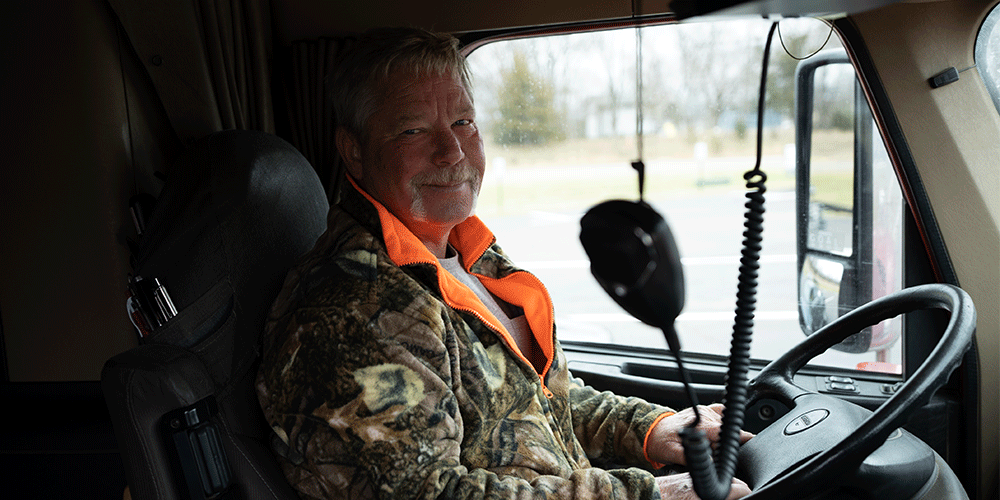Truck Driver Dress Codes: What Should I Wear to Orientation?
Lindsey started with ATS as a temp employee in June 2014 and was hired on in September 2014. While she started in the mailroom and human resources, in 2015 she moved into the administrative service assistant of driver recruiting role – the position she still holds today. She does a lot of reporting and tracking for the recruiting department and for the company as a whole. She has a hand in everything from sign-on bonus payouts and driver referrals to driver orientation. One of her favorite parts of working in this ever-changing industry is getting the chance to catch up with drivers when they come through town. As a self-proclaimed nerd, she also likes reporting and working in Excel spreadsheets.
Are you currently packing your suitcase for driver orientation? Before you get any further, I have some advice for you — namely, some do’s and don’ts.
As a truck driver, you’re probably wondering why on earth it possibly matters what you wear to orientation. You’re a truck driver who spends most of your day in the truck or getting hot and sweaty securing and tarping loads. You probably don’t even have time (or access to) a shower every day, so why does your orientation wardrobe matter?
Well, consider that, when you’re invited to driver orientation, you’re still not officially "hired" yet. It’s basically a week-long interview. Dressing in offensive or unsafe clothing can at the very best lead to an uncomfortable experience at orientation and at the very worst lead to an injury.
I oversee orientation at Anderson Trucking Service (ATS). I work directly with drivers throughout orientation and make sure they have everything they need to succeed.
I’ll not only help you understand why orientation dress codes are necessary but I’ll also help you understand what you should and shouldn’t throw in your suitcase.
When you’re finished reading, all that will be left for you to do is pack your bags.
Why is there a Dress Code at Driver Orientation?
Let’s start with the basics. Why does what you wear to orientation matter?
At the very basic level, an invitation to orientation (in most cases) doesn’t mean you’re going to be hired or offered an independent contractor agreement. You still have to attend each day of orientation, complete paperwork and pass tests (like a drug test, knowledge tests and a road test).
The people at orientation monitor drivers to ensure they’re a good fit for the company — just as drivers should be ensuring the company is a good fit for them.
If you see someone presenting and they’re wearing holey sweatpants and a t-shirt with a vulgar phrase on it, you might think twice about the carrier and its level of professionalism. The same goes for you if you wear the same outfit.
Carriers are looking for professional drivers, so you should look the part and dress for the opportunity you want (more on that later).
Perhaps the most important reason dress codes apply to orientation is for safety purposes. If you’re going through securement training* during orientation, you need to be properly clothed.
Any loose, baggy clothing can get caught on chains or straps, as can jewelry. Flip flops and Crocs won’t protect your feet if you drop a tool on them like a pair of good work boots would. They also won’t prevent you from slipping off a trailer out in the elements like rubber-soled boots would.
We want you to be comfortable at orientation, but we also want you to be safe too.
*This wouldn’t apply to you as a van driver.
What You Shouldn’t Wear to Driver Orientation
Based on the information above, you probably already have a good idea of what you shouldn’t wear to orientation, but I’ll break it down further. Keep in mind that many of these dress code tips tie into your personal safety when you’re practicing securement techniques and would therefore not apply to you as a van driver.
What you wear to orientation gives the team a good idea of what you’ll wear on the road in front of customers. You want to represent the company well.
Baggy Clothing
No one wants to get injured at orientation. If you’re in securement training as a flatbed driver, any clothing that’s extremely loose and can get caught on securement tools or the trailer should be avoided — whether it’s a loose t-shirt, sweatpants or bell bottoms.
This includes accessories like necklaces and scarves. Even wedding rings can get caught up in a strap or chain and take off a finger if you aren’t careful. Rubber rings are one option, but you could always wear gloves or slip your ring off when you’re securing.
If you don’t have to go through securement training, you can get away with comfier, baggier clothing.
Tight, Restrictive Clothing
Just as you shouldn’t wear baggy clothing, you shouldn’t wear overly tight, revealing clothing. Excessively tight clothing that restricts your movement can be a deterrent when you’re going through securement training. Comfortable, well-fitting clothing is recommended.
Vulgar or Inappropriate Language, Slogans or Logos
A lot of companies warn drivers against wearing clothing with vulgar language and/or inappropriate pictures, logos or slogans. Anything offensive to specific groups of people should be avoided.
If you do wear offensive clothing, you may need to cover it with duct tape while in class or you may be asked to change.
Flip-flops, Crocs, etc.
These shoes won’t protect your feet if you drop something on them during securement training and they won’t prevent you from slipping. Leave them at home.
Ripped, Torn Clothing
Ripped, torn, dirty clothing isn’t recommended because it doesn’t come off as professional. If you’re wearing the same clothes day after day, good hygiene is brought into question.
What You Should Wear to Driver Orientation
A casual but professional appearance is recommended at driver orientation. You don’t have to wear a suit and tie or even anything formal, but look presentable in a clean pair of jeans and a shirt or sweatshirt that you feel comfortable in.
Wear comfortable, yet supportive work shoes. Rubber-soled shoes, tennis shoes or steel-toed boots are recommended.
Follow good hygiene practices too, keeping your hair and facial hair nice and neat. Take pride in your appearance.
When you’re packing for orientation, be sure you check the weather. If you’re a flatbed driver, you could be doing some of your securement training outdoors, so you want to be prepared for rain, shine or snow. For example, plenty of warm layers are recommended if you’re visiting the Midwest during the winter.
If worse comes to worst, you can always run to a nearby Walmart or another store after class to pick up a few things.
Excel at Driver Orientation
When preparing for driver orientation, it's crucial to pay attention to the dress code recommendations outlined in this article — especially as a flatbed driver going through securement training. Driver orientation is not just a formality; it's a crucial step in your journey towards getting your dream job. Your appearance and attire during this period can impact your impression on the company.
The dress code at driver orientation serves several essential purposes. Firstly, it reflects your professionalism and respect for the company. It's an opportunity to show that you take the job seriously and are committed to upholding the standards expected of a professional driver.
Additionally, your attire during orientation gives a preview of how you'll present yourself in front of customers and colleagues on the road. Moreover, safety is a paramount concern during orientation, especially when you're engaged in securement training.
On the flip side, dressing appropriately for orientation involves wearing comfortable yet well-fitting clothing. A clean pair of jeans and a shirt or sweatshirt, along with supportive work shoes like rubber-soled, tennis shoes, or steel-toed boots, are recommended.
In essence, adhering to the dress code guidelines not only enhances your chances of a successful orientation but also sets a professional tone for your role as a truck driver.
So, when you're packing for orientation, remember that your attire plays a crucial role in making a lasting impression and ensuring your safety throughout this important process.
Check out these other tips for having a smooth driver orientation experience.



